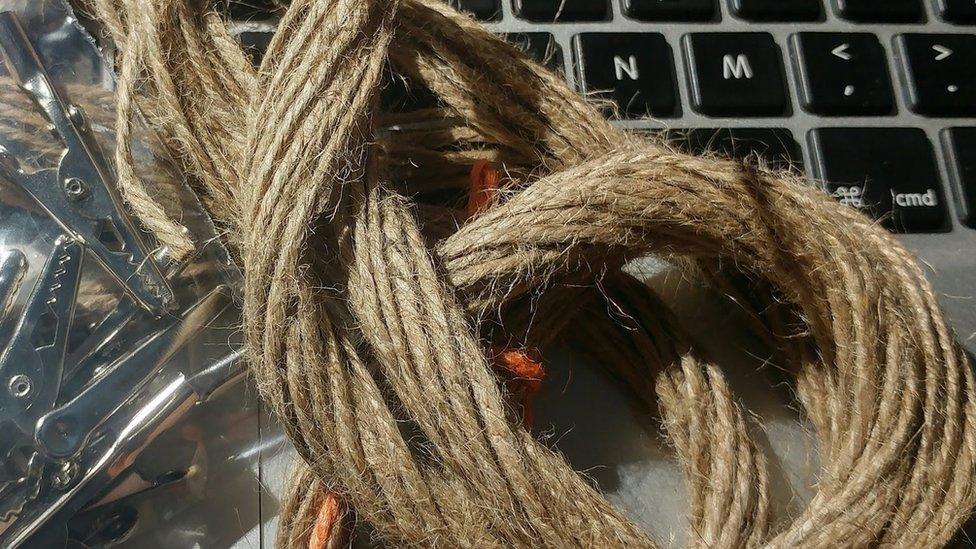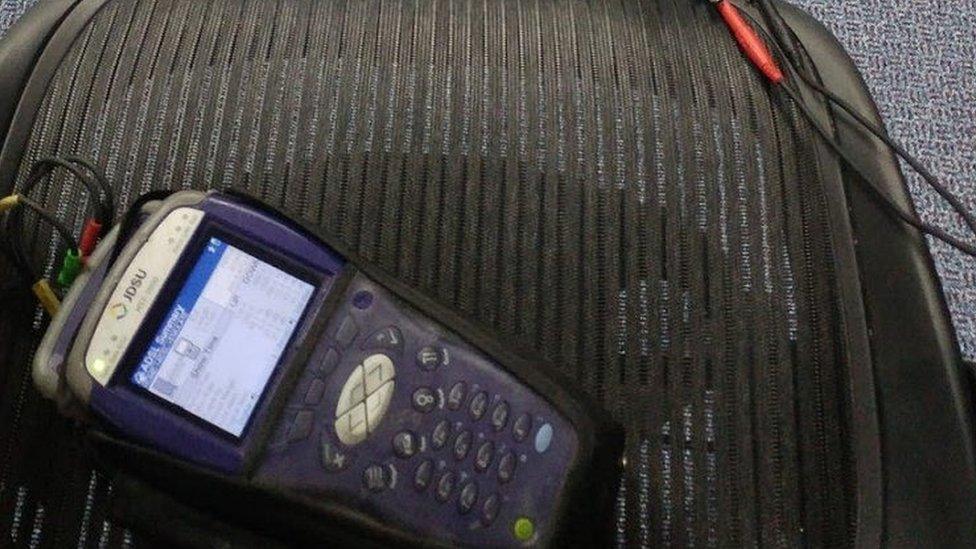Broadband over 'wet string' tested for fun
- Published

The experiment was a "bit of fun" says the firm responsible
Engineers at a small British internet service provider have successfully made a broadband connection work over 2m (6ft 7in) of wet string.
The connection reached speeds of 3.5 Mbps (megabits per second), according to the Andrews and Arnold engineer who conducted the experiment.
The point of the experiment appears to have been purely to see if it was achievable.
The firm does not believe there is a way to exploit the finding.
"To be honest it was a bit of fun, which one of our techies decided to try out - we have equipment we could test in the office, and why not?" Adrian Kennard, the internet provider's director, told the BBC.
"There is no commercial potential that we are aware of."
"What it does show, though, is how adaptive ADSL really is. This can be important when it comes to faulty lines with bad (or even disconnected) joints still providing some level of broadband service."
An asymmetric digital subscriber line (ADSL) is used by nearly half of premises in the UK. It works by splitting a single copper telephone line into separate voice and data channels.
The string used in the experiment was first put in salty water - chosen because salt is a good conductor of electricity.
Prof Jim Al-Khalili from the University of Surrey's department of physics explained how it worked: "Although wet string is clearly not as good a conductor of electricity as copper wire, it's not really about the flow of current.
"Here the string is acting as a waveguide to transmit an electromagnetic wave. And because the broadband signal in this case is very high frequency it doesn't matter so much what the material is."

The equipment to measure the broadband speed was lying around the office
Matthew Howett, principal analyst at research firm Assembly said: "While we often get tied up in knots over whether it should be fibre to the street cabinet or fibre all the way to the home, one thing's for certain and that's that this isn't going to make it into the mix of technologies companies like Openreach or Virgin Media will be using."